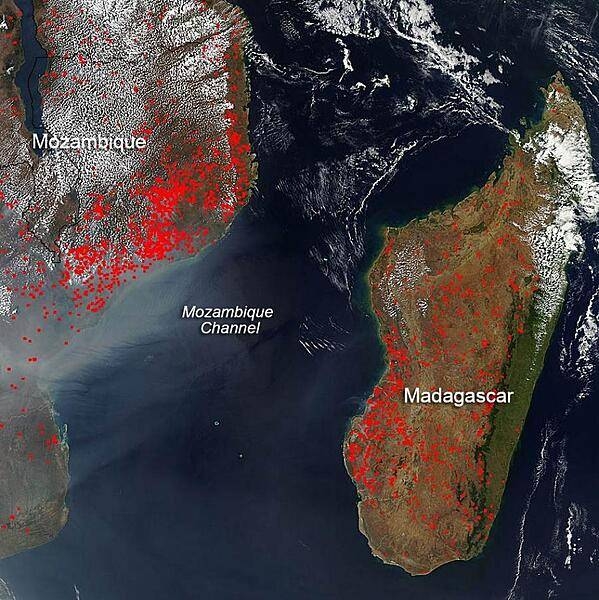Madagascar
Photos
2 Photos
Filter Categories
All
Filters
The location, widespread nature, and number of fires (outlined in red) in this satellite image suggest that these blazes were deliberately set to manage land. Farmers often use fire to return nutrients to the soil and to clear the ground of unwanted plants. While fire helps enhance crops and grasses for pasture, the fires also produce smoke that degrades air quality. In Mozambique and Madagascar, the growing season runs from the first rains in October-November. Thus, the clearing of lands in this early September image heralds the new growing season. Much of the once-green isle of Madagascar has been deforested via a combination of slash and burn agriculture for rice cultivation and doro-tanetry, a less intensive burning used to augment grass growth for cattle grazing. The fires mostly burn in grass or cropland, which is tan in this image. Photo courtesy of NASA.

On the northwestern coast of Madagascar, the salty waters of the Mozambique Channel (top, north) penetrate inland to join with the freshwater outflow of the Betsiboka River (right, east), forming Bombetoka Bay. Numerous islands and sandbars have formed in the estuary from the large amount of sediment carried in by the Betsiboka River and have been shaped by the flow of the river and the push and pull of tides. Image courtesy of NASA.
